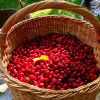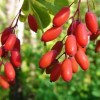Types and varieties of dogwood: growing, planting and care
Content
Peculiarities
Today, there are up to fifty different varieties of dogwood. Mostly these are trees, but there are also deciduous shrubs. You can plant dogwood in the northern regions, but in a similar situation, the berries for the plant will differ in taste from those that were collected in the south. Mild winters and warm, sunny summers allow the fruit to fill up faster. They become juicier and sweeter. If the dogwood was planted in accordance with the recommendations of gardeners, then approximately the same amount of fruit can be harvested.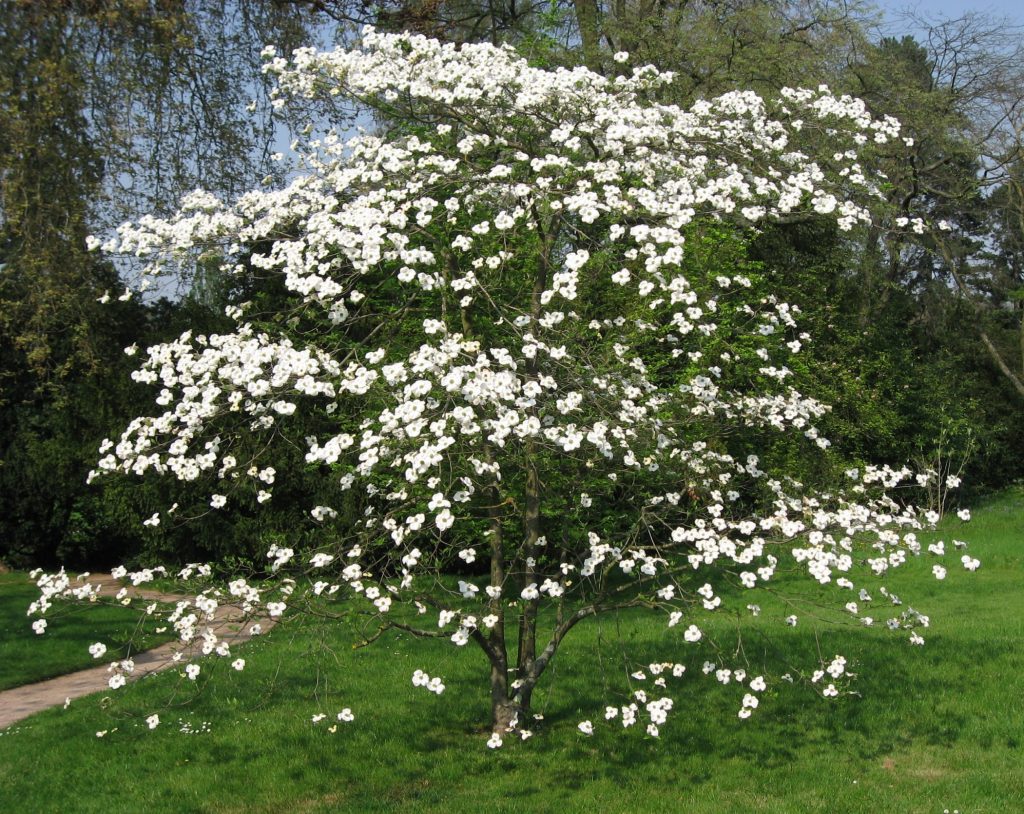
The frost resistance of the tree itself allows it to withstand temperatures of about 30 degrees below zero. Therefore, you can plant dogwood in central Russia. The plant does not really like cloudy weather and high humidity of both soil and air. In this regard, the harvest is badly affected by prolonged seasonal rains and fog. This weather also negatively affects the pollination of the tree during flowering. When the dogwood begins to bloom, pollination can take 4 weeks. During this time, the bees will have time to pollinate almost all the inflorescences, if they do not fall off due to strong wind or hail.
Kyzyl yield directly depends on the age of the plant. The older the tree, the more fruit it can harvest at the end of the season. Given this factor, fruiting can be expected from several kilograms to two hundred.
The fruits can be of various shapes and colors. There are black, red, orange, purple and yellow berries. They are usually round or elliptical, but also pear-shaped and cylindrical.
The dogwood tree is a cross-pollinated plant. It is also capable of self-pollination, but at the same time fruiting decreases. It is for this reason that it is desirable that several trees be planted on the site, preferably 4-5 pieces. This will make it possible to increase yields already in the first year of fruiting.
The plant loves a sunny set, but it feels best in a slightly shaded place so that the scorching summer sun does not burn the foliage.
Video "Sorts"
From the video you will find out which varieties of dogwood are most often grown.
Types and varieties
Quite often, a bad harvest is that the owners have chosen the wrong dogwood variety for growing on their site. For mid-latitudes, early varieties should be preferred. If you plan to plant a cotoneaster to decorate your garden, then it is better to choose large-fruited varieties.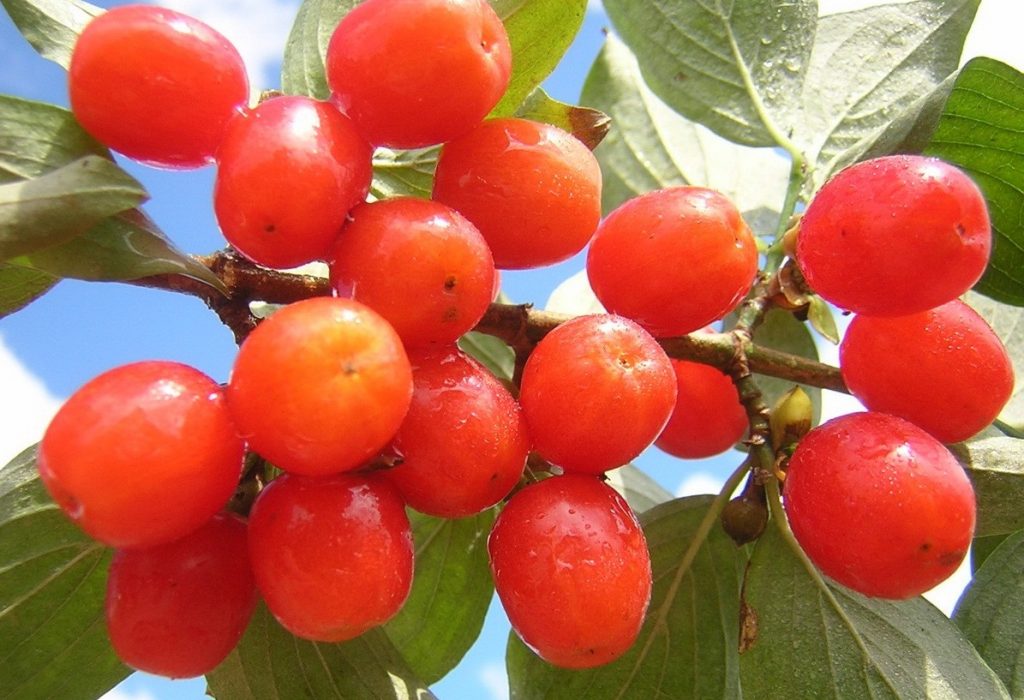
Gardeners recommend starting planting at the dacha of such varieties as "Coral Mark", "Eugene", "Vydubetsky", "Tender" or "Firefly". Large juicy fruits with a small stone. Each of them has some individual characteristics, but is grown in a similar pattern.
Growing
If you do not want or do not want the opportunity to independently breed dogwood offspring, then you can purchase ready-made seedlings on the market.
So how should you properly cultivate and care for seedlings?
Growing plants consists of removing weeds, loosening the soil, feeding and watering regularly. Dogwood grows very well in little shade, especially in the first years after planting. It is advisable to fertilize the trunks of young trees in autumn or spring with organic matter at the rate of 2-3 kg / m2. Mineral fertilizers are applied as follows: phosphorus (30-35 g / m2) - in the fall, nitrogen (15-20 g / m2) and potash (10-12 g / m2) - in the spring. Annual grafted dogwood seedlings must be mulched with sawdust, peat, humus or cut grass.
If it is well received and does not hurt during flowering, then the grown crop will be quite large. Of course, a lot will depend on the age of the tree.
Landing
How to plant a dogwood at home? In order for the dogwood to start well, you need to plant in a timely manner and provide proper care for the seedling.
First you need to prepare the ground. Dogwood can take root in almost any soil, but loose soil with a high aquifer is best. An exception would be swampy ground where groundwater is close to the surface. If the root system of the plant is constantly wet, then it will rot before it has time to start bearing fruit.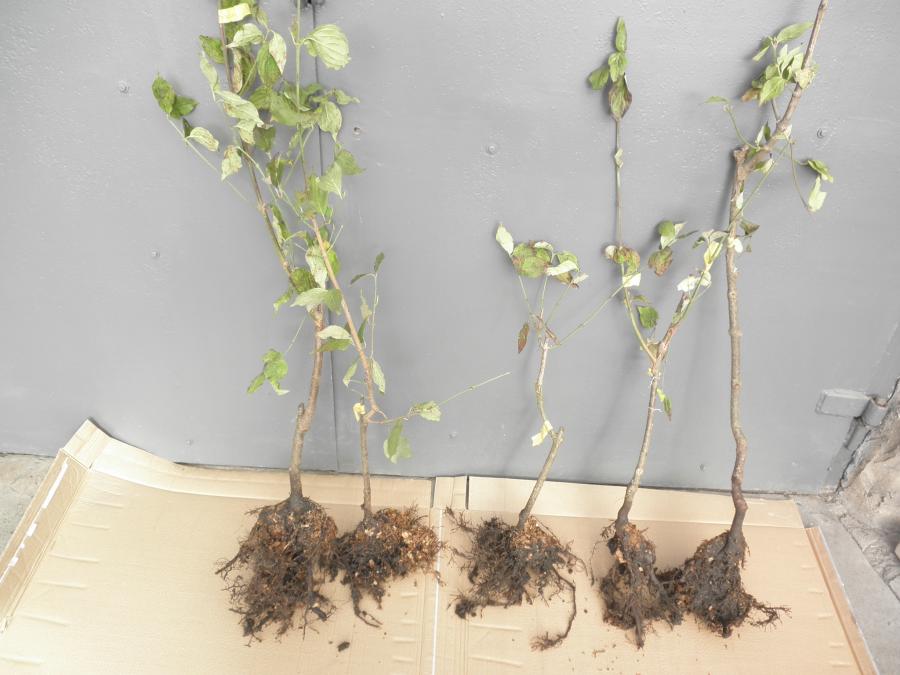
It is best to choose places near tall shrubs and trees. This will cover the plant with a shade so that the flowers and buds are briefly under the direct scorching sun. Planting should begin in early or mid-autumn, then by the spring season the plant will already take root and can give color.
Before planting, a hole is dug about 80 centimeters deep and up to half a meter in diameter. If there are several planted trees or bushes, then they need to be placed so that a distance of 4-5 meters remains between them. Seedlings are placed in a hole and buried in soil by 40-45 centimeters. After planting, it is advisable to put a low peg next to it, tying up a tree. The top layer of soil must be mulched.
If during planting you notice that some of the roots are dry, they need to be trimmed.
Care
If you provide proper care for the dogwood, you can harvest a large harvest of delicious juicy berries every year.
No complicated measures are required to take care of the plant. The formation of a bush or tree is carried out by pruning. Dogwood pruning is carried out in the first 3-4 years. Before pruning the dogwood, you need to wait for the plant to take over and pull up. The lower shoots are cut, which can make the bush shapeless. This procedure will not affect the fruiting of dogwood. Removing excess parts will improve the nutrition of the set fruit and allow the crown to receive more nutrients from the ground.
From time to time you need to apply fertilizers to the ground, but not concentrates. You can take charcoal, humus. But also in some cases it may be necessary to treat the plant from insects and some diseases. As a rule, dogwood is not affected by pests or diseases. But sometimes, extremely rarely, the plant suffers from a fungal disease of rust, manifested by yellow spots on the leaves. They destroy the fungus by treating the plant with Bordeaux liquid. Powdery mildew is also rarely affected by dogwood, which is fought with colloidal sulfur. For spotting, the dogwood is treated with the same Bordeaux mixture. Of the pests, the dogwood is the snailworm and the multiflorum caterpillar - the first is destroyed by processing the plant with lime, and the second - with Parisian greenery.
Caring for dogwood is easy if good healthy seedlings have been planted.
Reproduction
Dogwood propagation can be carried out in two ways: vegetatively and from seeds.
The method of growing a plant from seeds is not the best and most convenient. The main problem is that seedling is not guaranteed. And when the dogwood is taken, then you can expect fruits from it no earlier than in five years. Therefore, the cultivation of dogwood from the stone is carried out when there is no way to get seedlings.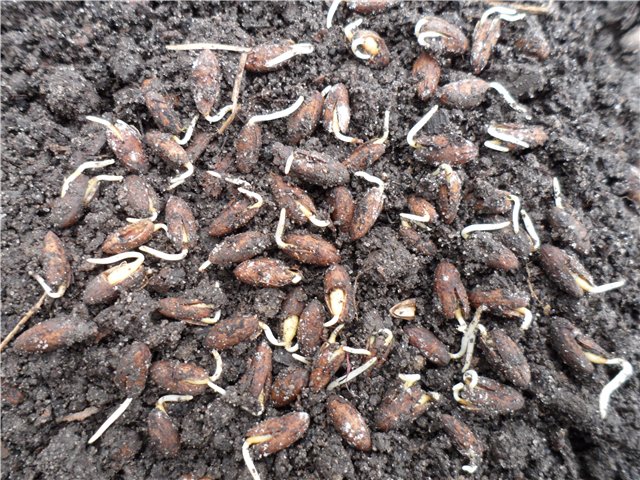
Seed propagation of dogwood is carried out to create new breeding properties for the plant.It should be noted that the germination of dogwood from green berries is observed much faster than from ripe ones. If fresh fruits are planted, then germination for the next spring can be about 47-48% on average.
How to grow a dogwood from a stone, increasing germination? Agronomists conducted a number of studies and found that there is an effective way to significantly increase the likelihood of plant sprouting, if you first prepare seed planting material (for example, drupe). To begin with, the collected seeds are kept for three days in a solution of sulfuric acid (2% concentrate). After soaking, they are laid out in a box with moistened sand, and placed in a greenhouse, where normal air temperature is constantly maintained. When the top layer of sand dries, it is moistened. As a result, at the beginning of spring (after 6 months) the germination rate was almost 80%.
Vegetative propagation of dogwood is carried out by several methods: budding, layering, cuttings. All of these methods are effective. If there is still grafting, but the pagons take root badly enough. Therefore, dogwood grafting is carried out mainly by experienced gardeners who have experience in plant propagation in a similar way.
Breeding dogwood at home is often carried out using cuttings. You need to start in June, when the shoots have stopped growing. In order for the plant to root better in the soil, you need to use special stimulants for growth, regulate the level of temperature and humidity in the room (for example, in a greenhouse), and also provide normal lighting.
Another simple method is budding, which gardeners consider it to be one of the most effective ways. Held in late July or early August. The survival rate of the eyes is up to 70%.
You can graft a stalk in early spring with the onset of warming, but the probability of the expected result is usually 15%.
Video "Growing"
After watching the video, you will learn how to grow dogwood correctly.

